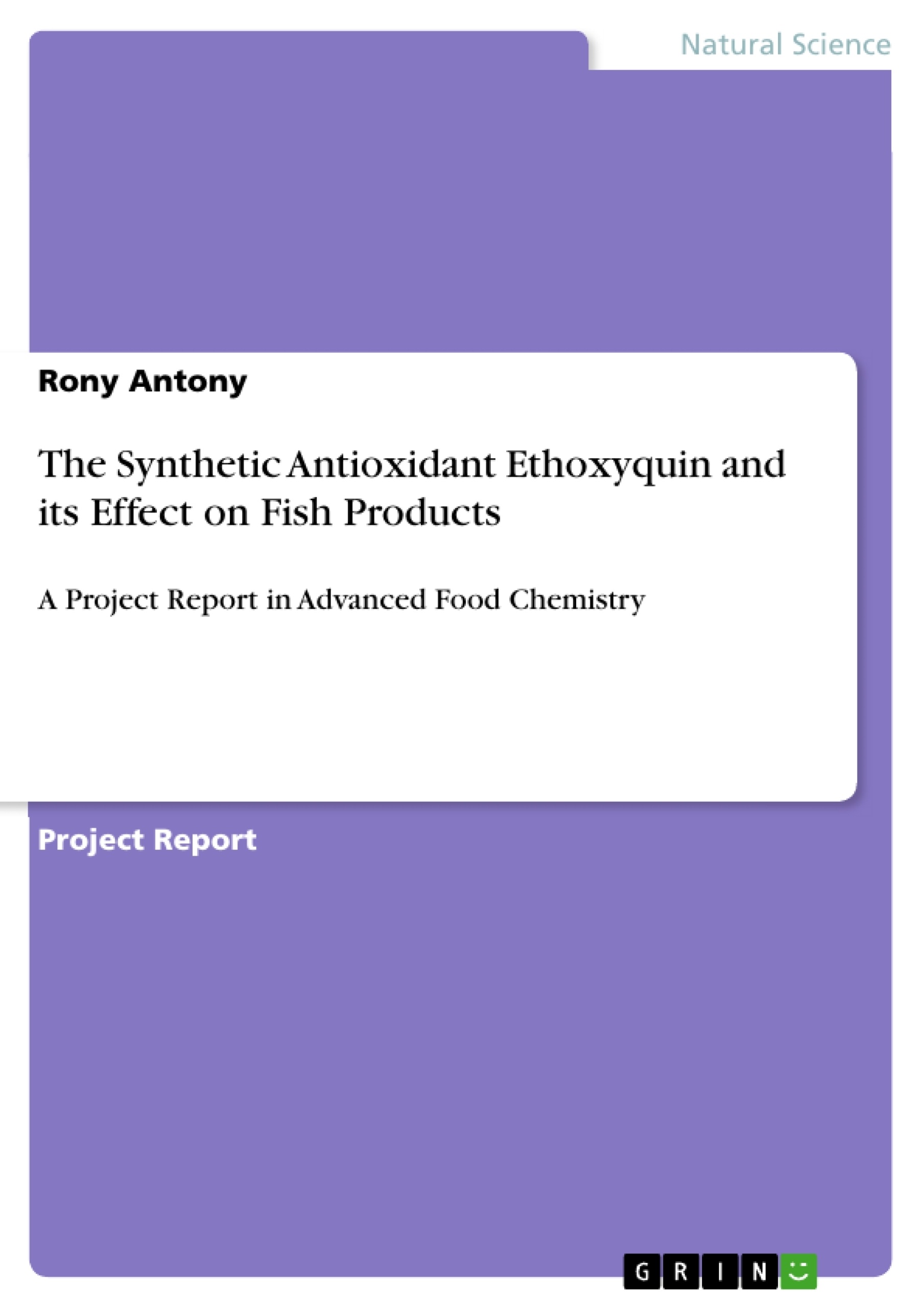This work analyzes the effects of the antioxidant Ethoxyquin on fish products. The synthetic antioxidant Ethoxyquin is widely used, specifically in the fishmeal industry in order to prevent the fishmeal from lipid oxidation. New implemented regulations of EU do not allow to incorporate any traces of EQ on feed in some countries within the Europe. But in many countries, it is used in some spices like rosemary and chilli to preserve their color. The toxicity of EQ is the major problem which creates some harmful effects on human and animals when animals are fed with the feed containing EQ. At the same time, humans are affected indirectly by other means. The project report tries to present the physical and chemical properties of EQ, its working mechanism as an antioxidant in fishmeal, positive and negative attributes of EQ on feed, feed ingredients, human and animals, regulations and requirements of the incorporation of EQ on different feed, the reauthorization part and the replacement of EQ by some alternative natural and/or synthetic compounds as well.
Three major synthetic antioxidants are used in food industry especially in processed feed such as fishmeal. These are Ethoxyquin (6-ethoxy-1,2-dihydro-2,2,4-trimethylquinoline) (EQ), Butylated Hydroxytoluene (2,6-di-tert-butyl-p-cresol) (BHT) and Butylated Hydroxyanisole (tert-butyl-4-hydroxyanisole) (BHA). Other synthetic antioxidants such as octylgallate and propylgallate have no significant role, even though among all the synthetic antioxidants, ethoxyquin is mostly used because of its low production costs and higher antioxidative effect.
Ethoxyquin has been widely used in fishmeal as an antioxidant and its antioxidant capacity through free radical scavenging mechanism has been widely understood. However, when toxigenicity in human and animals is considered, the use of ethoxyquin is still in a bewildered stage for a decision. A combination of multiple antioxidants (either natural or synthetic or a combination of natural and synthetic) with less toxicity and stability along with some emulsifying or chelating agents may provide some good results. In order to do so, extensive data collection and research have to be conducted. Through this process, stabilization and reauthorization is possible to a greater extent and the present huddle can be minimized. Knowing the toxicity, the regulating body shall consider the maximum inclusion level of EQ on feed and feed ingredients.
Content
1.Abstract
2.Introduction
3.Chemical structure
4.Mechanism of Ethoxyquin as an antioxidant
5.Toxicity
6.Regulations and requirements
7.Limits of ethoxyquin residuals in human food
8.Natural alternatives
9.Discussion
10.Conclusion
11.References
Abbreviations
- Arbeit zitieren
- Rony Antony (Autor:in), 2017, The Synthetic Antioxidant Ethoxyquin and its Effect on Fish Products, München, GRIN Verlag, https://www.grin.com/document/453908
-

-

-

-
Laden Sie Ihre eigenen Arbeiten hoch! Geld verdienen und iPhone X gewinnen. -

-
Laden Sie Ihre eigenen Arbeiten hoch! Geld verdienen und iPhone X gewinnen. -

-
Laden Sie Ihre eigenen Arbeiten hoch! Geld verdienen und iPhone X gewinnen. -

-
Laden Sie Ihre eigenen Arbeiten hoch! Geld verdienen und iPhone X gewinnen. -

-
Laden Sie Ihre eigenen Arbeiten hoch! Geld verdienen und iPhone X gewinnen. -

-
Laden Sie Ihre eigenen Arbeiten hoch! Geld verdienen und iPhone X gewinnen. -

-
Laden Sie Ihre eigenen Arbeiten hoch! Geld verdienen und iPhone X gewinnen.

